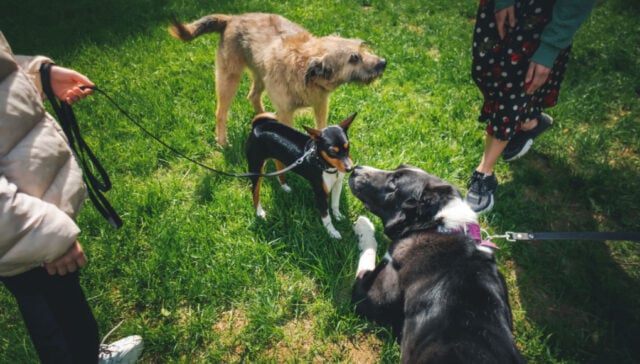
Table of Contents
- Before Visiting the Dog Park
- 1. Know Your Dog's Personality
- 2. Have Your Dog Vaccinated
- 3. Take Your Dog to a Vet Visit
- 4. Give Your Dog Some Basic Training
- 5. Pick a Dog Park that Suits You and Your Dog
- 6. Observe the Dog Park First
- 7. Schedule Your Visit to the Park
- 8. Get an Off-Leash Permit Tag
- 9. Check Your Dog for Fleas and Ticks
- 10. Prepare the Important Dog Supplies
- 11. Get Your Dog to Exercise First
- During the Visit to the Dog Park
- 1. Walk Your Dog Around the Dog Park First
- 2. Go to the Designated Dog Park Area
- 3. Gradually Let Your Dog Roam the Park Off-Leash
- 4. Look for Some Activities to Do in the Dog Park
- 5. Gradually Introduce Your Dog to Other Dogs
- 6. Keep an Eye on Your Dog
- 7. Greet and Make Small Talks with Other Owners
- 8. Make Sure Your Dog is Hydrated
- 9. Pick Up Your Dog’s Stool
- 10. Make the Visit Short
- After the Visit to the Dog Park
- Things to Consider When Visiting a Dog Park
- How to Introduce Your Dog to a Dog Park: Final Thoughts
Admit it. You probably considered taking your pet dog to a dog park visit at least once.
Your initial thoughts about dog parks are pooches casually galloping like horses across grassy space.
For someone who owns an active woofer, it makes sense to think of an open space where your dog can roam free and do its thing.
And dog parks can give your dog just that.
It’s the perfect place for your energetic canine pals!
So if you are interested in bringing your dog to the park, then this blog is for you!
I’ll be giving you expert-approved steps on how to introduce your dog to a dog park.
Ready to know exactly how to do that? Let’s start!
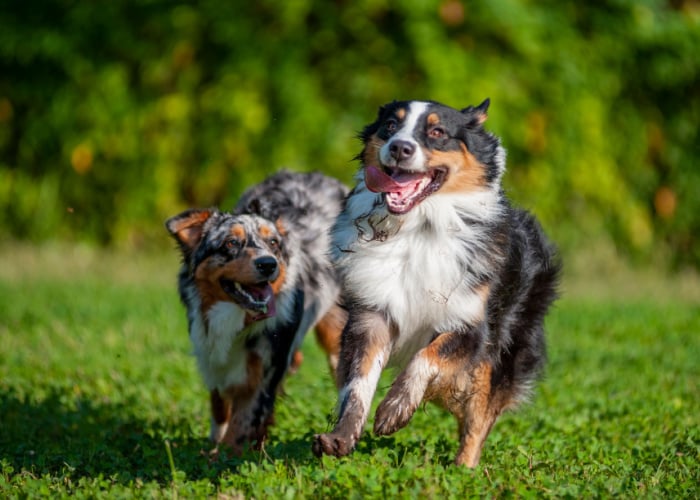
Before Visiting the Dog Park
Any dog owner who would help you introduce your dog to a dog park knows that preparation and planning are a must.
Like many other first times, this is to ensure that the activity will go smoothly and without any trouble.
So, what should you prepare before visiting the dog park with your dog?
Let’s find out!
1. Know Your Dog's Personality
The first step in introducing a dog to a dog park is to know if it's suited inside the park’s environment.
And there’s no other way to tell if it’s compatible with the park setup than with its personality traits.
Pay attention to your dog’s reaction when it interacts with people or its fellow dogs.
Does your dog get aggressive quickly?
Do they get territorial?
Do they try to show dominance?
If any of these questions give you a “yes” answer, then perhaps your dog might not be suited in the park.
RELATED: Dog Temperament Test
2. Have Your Dog Vaccinated
Is your dog complete in vaccines?
Make sure that your Fido is completely vaccinated because a lot of dog parks require owners to have their dogs complete the vaccines.
Some of the required vaccines are:
But even without the park policies, you should know better that vaccines are a must for dogs.
Without the vaccines, your dog can contract severe diseases, some of which are lethal.
RELATED: 10 Things You Must Know About Dog Vaccines
3. Take Your Dog to a Vet Visit
Aside from the vaccines, you should also take your dog to a veterinarian even for a wellness check-up.
They can give you medical-related tips when taking your dog to a place with lots of potential stimuli.
Wellness check-ups can also help you detect the onset of an illness, especially those that don’t have any obvious symptoms yet.
Hopefully not, but your dog might be a carrier of any contagious diseases!
You won't know until you have it checked.
RELATED: 11 Most Deadly Dog Diseases
4. Give Your Dog Some Basic Training
An untrained dog is a danger not only to the dogs in the park but to itself as well.
Being able to respond to commands helps dogs steer away from potential troubles in the park.
Without basic training, you might lose control over your dog especially when it cause trouble or becomes implicated in one.
Some of the most important commands that your dog should know are:
- Sit
- Stay
- Lay down
- Leave it
- Come
RELATED: Most Effective Dog Training Methods According to Science

5. Pick a Dog Park that Suits You and Your Dog
For first-timers, it’ll be a surprise to know that not all dog parks are the same.
And if your dog is to visit one, might as well take it to a place that'll suit its needs and guarantees enjoyment.
Some of the considerations that you may want to look out for in dog parks are:
- Dog parks that extend until nighttime
- Dog parks that separate sizes and even age
- Fenced or no-fence dog parks
- Dog parks that have off-leash and on-leash zones
- Parks that are away from busy roads
- Dog parks that are well-lit during the night
- Dog parks with complete facilities, water, shades, and open spaces
RELATED: Mistakes Dog Owners Make In Dog Parks
6. Observe the Dog Park First
If you are still unsure of whether your dog will have a good time in a dog park, you can observe inside first without your dog.
Take note of the condition of the dog park and how it operates.
Check for its completeness and what facilities it offers to the patrons.
Next, observe how the dog park goers are faring inside the area.
See if parkgoers are obediently following the park rules and check if there is order in place.
7. Schedule Your Visit to the Park
Now that you have a feel for your preferred dog park, it’s time to schedule your dog’s first visit to the park.
Ideally, you want a time of the day when the dog park is rather empty.
Melissa Nelson DVM, PhD., recommends going to the park on a weekday afternoon since dog parks are usually full during evenings and weekends.
8. Get an Off-Leash Permit Tag
Some states like Minnesota and Iowa require dog owners to get an off-leash permit tag first before entering dog parks.
Off-leash permit tags are proof that you comply with having your dog vaccinated against diseases like rabies.
It also tells that your pet has not yet been declared as a potential danger in the community.
9. Check Your Dog for Fleas and Ticks
The last thing you want is for your dog to become a carrier of parasites.
So, before you take your dog to its first dog park visit, make sure that it’s free from fleas and ticks.
Parasitic infestations often have symptoms like constant scratching, pawing, or licking of an area.
Look out for these symptoms and apply some medication should you find some parasites on your dog’s skin.
10. Prepare the Important Dog Supplies
Of course, your dog’s first visit to a dog park means you should equip yourself with important items.
Remember that your responsibility to take care of your pup extends to when you’re inside a park!
Some of the must-bring items we recommend are:
- Dog leash
- Water bottle
- Poop scooper
- Empty plastic bags
RELATED: What to Prepare Before Visiting a Dog Park: 9 Vital Pup Supplies
11. Get Your Dog to Exercise First
Don’t take your dog to the dog park as is! They might get too excited once they’re inside the premises.
It best to exercise your pup first right before entering the park to shake off its excess energy.
One best way to do this is by walking from your house to the park if it's near.
RELATED: 7 Ways to Turn Daily Activities Into Exercise for Your Dog
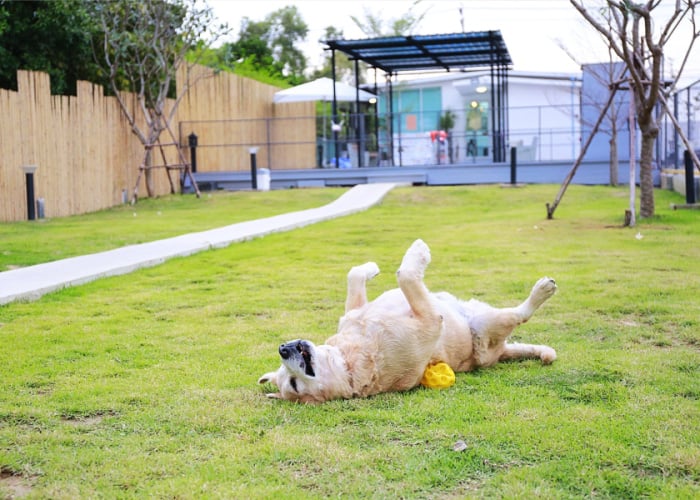
During the Visit to the Dog Park
You’ve planned for your dog’s first visit to the dog park, and you cleared it for any health diseases.
You also prepared the items to bring when your dog gets there.
Now what?
Well, it’s finally time to let your dog enjoy its very first experience inside the dog park!
Just remember that there is a set of unwritten etiquette that needs to be followed.
On top of that are dog park policies that you must obey.
These rules and etiquette are in place to make sure that everyone inside the park will have a good time during their stay inside.
So, here’s what you and your dog should do on its first-ever dog park visit.
1. Walk Your Dog Around the Dog Park First
The secret to introducing your dog to a dog park is gradualness.
Everything feels novel yet foreign since your dog is still new in the dog park.
So to familiarize him with the environment, start by walking your dog not inside the dog park, but around it.
Let it take its time stopping, sniffing, and glancing around the park.
Eventually, your dog will relax as it finally gets a feel of the place.
That's your go-signal to enter the park.
2. Go to the Designated Dog Park Area
After finally entering the park, go to the designated area for your pet and make sure to stay there throughout your visit.
Dog parks usually segregate the dog park goers based on their size and age.
There are also off-leash zones inside the park for your dogs to roam around without being tethered.
All of them are in place to make sure that the parkgoers can enjoy their time inside without the worries of danger and dog attacks.
RELATED: 25 Creative Dog Parks To Visit In America
3. Gradually Let Your Dog Roam the Park Off-Leash
Letting your dog roam the park off-leash should be a gradual process.
You can’t just send them off running around or exploring the park alone without you closely following behind.
What you can do is start with a few minutes of off-leash time before putting it back on.
You can do it around 10 minutes on your first try.
From there, build up Fido’s confidence by gradually increasing its off-leash time.
But if you yourself are uncomfortable allowing it untethered in the first place, just let it on a leash then.
From there, you can slowly transition him from a short to a long one in time.
No need to rush for you both.
RELATED: Why Not to Walk A Dog Without a Leash
4. Look for Some Activities to Do in the Dog Park
The purpose of visiting the dog park is for your dog to enjoy itself.
And there are a lot of things your dog can do to make the most of the visit!
Dogs typically find joy in doing activities with their owner.
Activities like tug-of-war, fetch, and jogging will do to make your dogs happy and satisfied.
Some dog parks offer dog agility equipment and other activity facilities for your dogs to play with.
Still, socializing and playing with other dogs is also a source of enjoyment that you can encourage your dog to do.
RELATED: Best Agility Dog Parks in the US (+ 5 Benefits)

5. Gradually Introduce Your Dog to Other Dogs
Socialize your dog slowly but surely when introducing it to a dog park.
Familiar and playful dogs in the park would often rush to the new “playmate”—your dog, if it's his first time going.
Don't worry; not all dogs who do that are bullies.
They're most just curious about the new addition of playmates inside the dog park.
However, this rushing can give a negative experience to your dog.
Chances are, your dog will get overwhelmed and anxious over the influx of pups around it.
Instead, let it meet one dog at a time before letting it be crowded with playmates.
6. Keep an Eye on Your Dog
Stay alert and always keep a good eye on your dog.
This should come as a no brainer!
Dog fights are common in dog parks and your pup might get caught in one.
It can easily get in trouble as the cause or the victim of dog fights.
So don’t get too distracted in the park and note the behaviors of not just your pet, but other dogs, too.
Always check their body language and overall mood.
And when you sense that there’s a fight or aggression brewing, don’t hesitate to call your dog and leave the park.
Just revisit it some other time!
7. Greet and Make Small Talks with Other Owners
Dog parks are filled to the brim with seasoned dog owners.
As someone who has the same interests as them, it’s a common courtesy to greet them and make small talk.
Be polite should you ask them to set boundaries with your anxious pet.
You can approach them for any advice regarding dog parks as their experiences are invaluable insights for you.
8. Make Sure Your Dog is Hydrated
With all the running around, your dog is bound to overheat and become dehydrated.
It becomes worse if your dog is playing in the park under the scorching heat of the sun.
But even without the threat of hot weather, don’t forget to keep your dog hydrated at all times!
Making them drink water cools them down and prevents significant loss of liquids in your dog.
RELATED: How To Tell If Your Dog Is Dehydrated?
9. Pick Up Your Dog’s Stool
Don’t be those nasty owners who leave the park with their dog’s poop everywhere!
It’s an etiquette and responsibility for all dog owners to pick up their pet’s waste inside the park.
Picking up your dog’s poop not only makes the park clean and usable for the next visitors, it also avoids spreading microbes in the park through the waste.
10. Make the Visit Short
Spending time inside the dog park is great and fun, sure.
But remember: your dog’s first experience in the park should just be an introductory visit.
Limit your stay inside the dog park only for about 20 to 30 minutes.
You just want them to get a feel for the environment whilst checking on their behaviors inside the park.
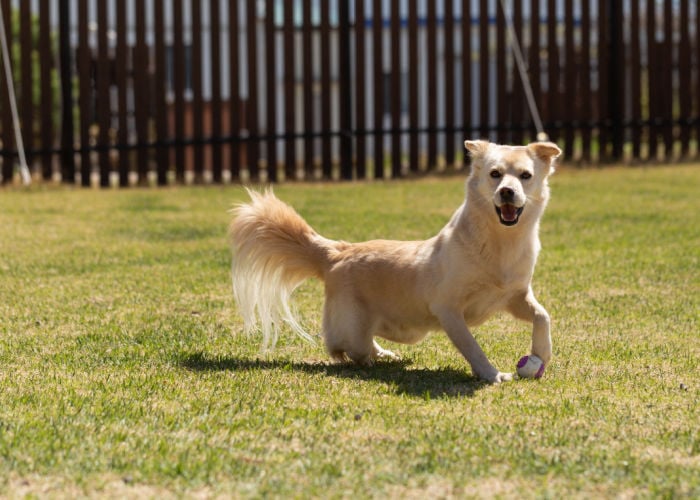
After the Visit to the Dog Park
Your duties as a dog owner don’t stop with just visiting the park.
One of the steps on how to introduce your dog to a dog park lies in correcting or affirming your dog’s behavior inside the park.
It’s also a great opportunity to inspect your dog for possible health problems and infections.
1. Reward and Praise Your Dog
Is your dog behaving well inside the park?
Did it enjoy its first visit without ever causing a commotion?
Then your dog deserves praise!
Don’t be shy about giving your dog praises and treats when they deserve it.
The positive reinforcements help make the dog do the desirable behaviors more and more during each visit to the dog park.
2. Reflect on Your Dog’s Behavior
All your dog’s behaviors and actions—whether they were good or bad—inside the park are worth reflecting on.
You need to understand why your dog acted the way it acted inside the park.
This helps you to praise the desirable behaviors through positive reinforcement and correct the wrong ones.
3. Check Your Dog for External Parasites
Checking your dog for ticks and fleas after the visit is equally important as checking it before the visit.
After taking your dog to the dog park, inspect your dog’s fur coat for potential parasitic infestation.
If there has been an infection on your dog’s skin, treat it with anti-flea and tick products that are available in the market.
Additionally, you can take your dog for a vet visit to get some prescriptions and medical treatments for the parasite attack.
4. Schedule Future Doggy Playdates
Once you and your dog start getting comfortable at dog parks, you can one-up the experience through doggy playdates.
This is where building connections with other dog owners can help you.
They’ll be more than happy to let their dog spend time with yours!
Just make sure that the dog you’ve chosen as the date matches the temperament of your dog.
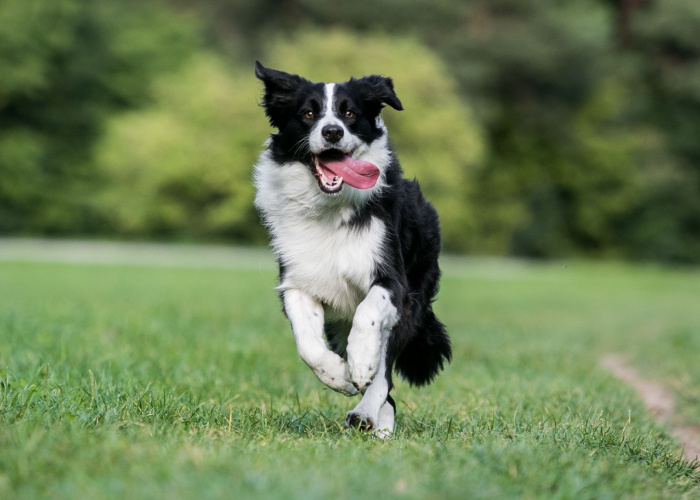
Things to Consider When Visiting a Dog Park
Wait up! Introducing your dog to a dog park doesn’t stop with the to-do list before, during, and after the dog park visit!
To further help you with introducing your dog to a dog park, here are some things you need to consider when visiting dog parks.
1. Don’t Visit the Dog Park if Your Dog is in Heat
If your dog is in heat or hasn’t been neutered yet, don’t bring it inside the dog park.
Your female dog will release scents that attract male dogs within the dog park.
With a lot of male dogs gathering to the scent, it will certainly start a ruckus inside the park with your dog at the center of it all.
2. Don’t Bring Toys or Food to the Dog Park
Dog toys, foods, and treats are generally off-limits in the dog park even when the park rules don’t prohibit you from bringing them.
This is because these items trigger resource guarding in your dog, which can be another source of commotion inside the park.
3. Socialize Your Dog
Socializing your dogs regardless of their age is a must when it comes to dog park visits.
Dog parks generally don’t encourage owners to bring their unsocialized dogs inside the park.
Unsocialized dogs are not yet used with the presence of other dogs and even humans.
They can get extremely anxious and aggressive, which makes them a hazard inside the park.
4. Practice Recall Training
When it comes to visiting dog parks, recall training is one the most important type of training you should teach your dog.
Recall training helps the dog go back to you when it has strayed quite a distance away from you.
It also calls your dog’s attention when it’s becoming distracted inside the park.
This training is important, especially in scenarios where you are sensing a fight that may break out.
5. Learn Your Dog’s Body Language
You should consider learning dog body language before you take your dog to the dog park.
This will help you recognize your dog’s overall mood and emotional state.
In dog parks, a dog's body language tells a lot about how their interaction will go.
Knowing this will help you and your dog avoid a lot of trouble inside the park.
6. Learn How to Break Up a Dog Fight
Sometimes, you need to take matters into your own hands and learn to break up a dog fight yourself.
A simple throwing of towels to both dogs will do the trick as both can’t see their threat anymore.
You can also find an object that you can place in between them to create a separation or a space between them.
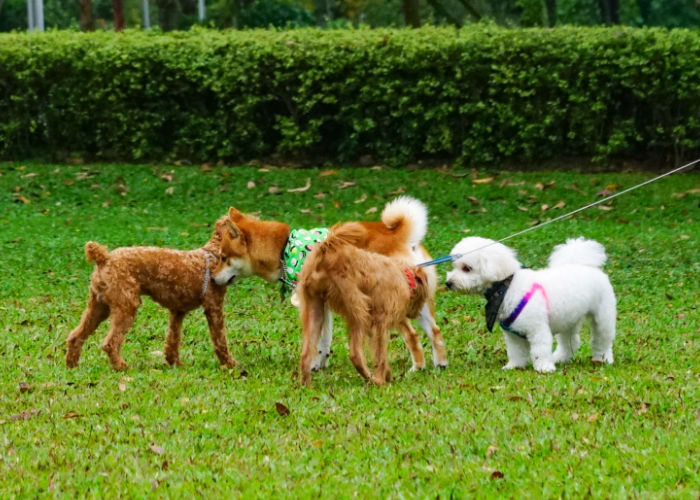
How to Introduce Your Dog to a Dog Park: Final Thoughts
There you have it! Now you know how to introduce your dog to a dog park.
If you and Fido are looking for a change of environment, dog parks should be your go-to place.
Just make sure to plan and prepare for your dog’s first visit!
Follow all etiquette, rules, and regulations to avoid encountering trouble inside the premises.
Always keep an eye on your dog and make sure that your dog is safe and away from harm.
And finally, remember to have fun, engage, and interact with your dog through various activities. Your dog will cherish this memory with you, always.
But hold up!
If you are still unsure of the benefits that dog parks can bring to your dog, I’ll put a link below for you to check out.
Alternatively, you can read the articles below and learn about other dog park activities to do with your pet.
I’ll also be including a link to an article about dog park etiquette. Make sure to check them all out!












